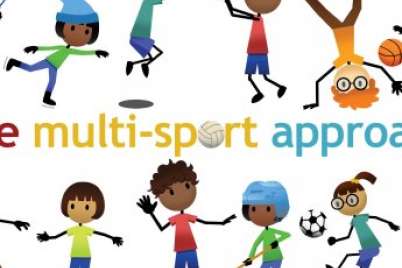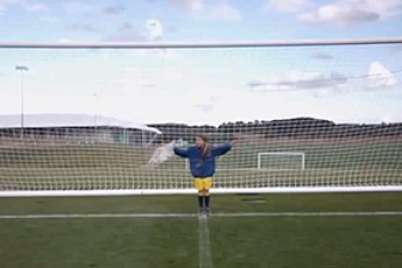
Canadian hockey in crisis? Ontario Minor Hockey looks at skills
Is Canadian hockey in crisis?
In the opening months of 2014, Canada’s national teams stirred debate by producing a bag of mixed results. In January, the young team that went to the World Juniors looked outplayed by opponents with better skills. They placed a lowly fourth, and for a while, it seemed the sky was falling.
Then the senior men’s and women’s teams went to Sochi and came home with gold medals. All was well again because Canada was back where it “should” be.
Still, many observers agreed that the World Juniors served as a warning for Canadian hockey—that we might not be developing our new generation of players as well as other nations.
Ian Taylor doesn’t think the sky is falling, but he certainly thinks we can always get better. As director of development programs at the Ontario Minor Hockey Association (OMHA), Taylor believes we need to promote more skills development at the grassroots level.
How can we make it happen? Active for Life talked with Taylor recently to learn about the new program innovations at OMHA.
What is the OMHA philosophy on player development, and how does skills training fit into it?
First of all, we are a large organization serving 100,000 minor players. We have everything from kids who are just learning to play to competitive rep hockey players in Bantam AAA and Minor Midget AAA who are getting into the draft year for the Ontario Hockey League. So there isn’t a one-size-fits-all formula.
Brent Sutter says we need more skilled players, and I think many of us in minor hockey get our backs up a bit and we say, “What do you mean?” We’re providing all of this range of programming, so there’s opportunity. And we’re not in the business of just developing players to win medals.
But when we step back from that, do we think we can be better? Sure. There are always things we can improve on.
What sorts of things is OMHA looking at doing?
In player development, there are about three or four key things that we’re looking at.
First, coach education has certainly always been a big part of our programs through certification clinics. We require all of our coaches to have the appropriate NCCP certification.
The next thing is how we teach skills. Certification gives our coaches a baseline—it gives them some soft skills on communication, and it gives them some technical or tactical ideas based on the level they’re working with. But beyond that, we’re asking, how can we help our coaches to teach skills?
Hockey Canada has created specialty clinics on skating, puck control, small area games, creating offence, developing defence—and those have been really successful for us. It’s more about teaching the coach how to teach specific skills using more hands-on and practical approaches as opposed to just theory.
And then there are the resources that we provide to our coaches, whether it’s through our website or the stuff we give out at our clinics such as manuals and DVDs. We’re adding a lot more videos to our YouTube channel and sharing that with coaches as well.
What are some of the new programs that OMHA has introduced?
We have done a couple of things to promote extra player development by creating a couple of skill “challenges” that players complete outside of their regular team activity. They can do these essentially on their own at home — on their driveway, in their basement, on a pond — that sort of thing.
The first challenge is called the 5,000 Puck Challenge. It’s a 10-week program where they shoot 100 pucks a day — different types of shots — wrist shot, slap shot, backhand. It’s the idea of repetition, working on their skills at home, and taking some ownership for their personal development.
The second challenge is a stickhandling program called the Dangle and Shoot Challenge. It’s a similar idea. Over eight weeks, they have to do certain skills every day for five days a week.
We’re all saying that the kids aren’t having enough unstructured play, and this is a structured program, but the idea is to try to get them to do it on their own and keep track of it in a self-directed way. And these are things an 8-year-old kid can do as much as a 17-year-old.
How do you get the kids to start doing these challenges?
We have the OMHA website where we promote it, and we also have a magazine called Hometown Hockey that goes out to all of our members four times a year. We actually had pullouts in the centerspreads of a couple of issues this year that provided a tracking sheet for each challenge — one for the 5,000 puck challenge and the other for the Dangle and Shoot.
The kids could pull out the tracking sheets and put them on their fridge, in their garage, or in their basement to keep track of what they did each day. We also encouraged them to register online with us as part of our Players Club, and then we sent them emails every week with videos of the skills they were supposed to do.
What kind of response have you had from players and parents?
It’s been amazing. When we finished the 5,000 Puck Challenge, we received some incredible emails from parents. We asked them to send us pictures of where the kids were practicing their skills. Some were in the basement, some were in the driveway, some in the garage — we also had some on their outside rink in the backyard.
We received emails like “They really enjoyed it,” and “Their shot has really improved”, and “They have more confidence.”
The kids really got into a routine of practice, and we ended up hearing about benefits we didn’t anticipate, like time management. We didn’t start out with the idea that time management skills would be an outcome, but it’s amazing what has come out of the challenges.
What are the next steps at OMHA for promoting skills?
So far, we’ve done a really good job of promoting the philosophy of the long-term player development model. The next stage is going to be, “Are we playing too many games? Is winning too important?” And now you get back to the stuff that Brett Sutter was talking about.
We have some good resources on our website, and all of our clinics have a module on LTPD now. I hear coaches talking about it. Now we’re at the point of looking at what our seasons look like, how many games are being played, what’s the practice-to-game ratio, and is there too much emphasis on winning. So we’re going in the right direction.






To me this seems like a “local” approach to find a solution. But is it not in comparison to others that the questions are raised?
Normal quality improvement measures include a benchmark with other well performing systems.
Why not go over seas and see what others are doing and how their environment or hockey infrastructure looks like?
That is a good point Michael. Benchmarks with other well performing hockey systems is a great reference. I know that Hockey Canada is continuously looking abroad and comparing to other top performing hockey nations.
I also know that a scan of performing hockey programs around the world reveals that many “made in Canada” solutions are part of the best practices applied.
Great article! It’s nice to see the OMHA working to make changes. I think the biggest crisis in hockey today is that the game has become to professionalized at all levels, kids are leaving the game because it’s no longer fun, the game has become to costly for many and there’s way too much focus on winning and not nearly enough on developing the long term athleticism of each player. Hockey in Canada is a huge ship to try to get to change direction but it’s great to see many including the OMHA who are trying to make a difference. ~ David